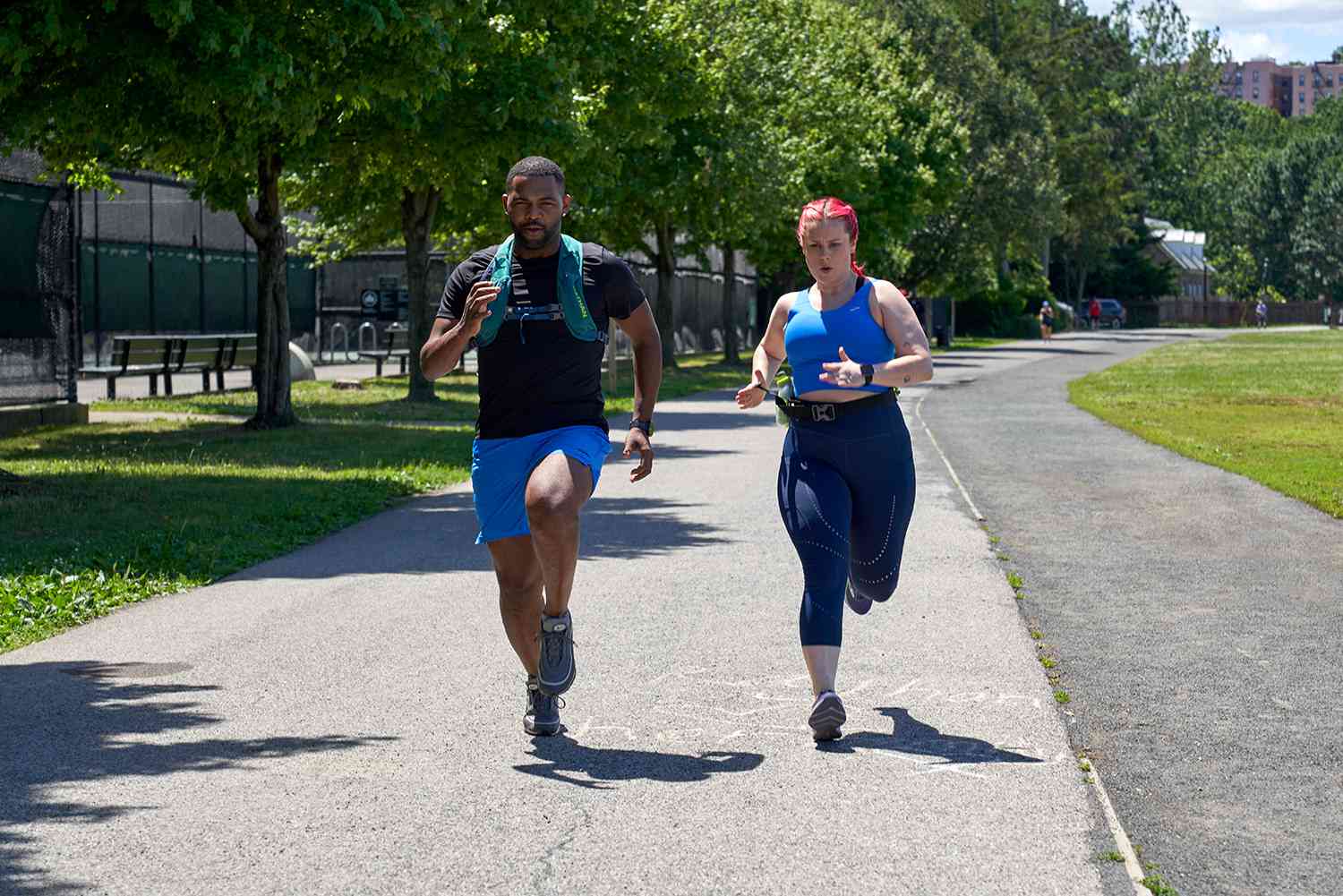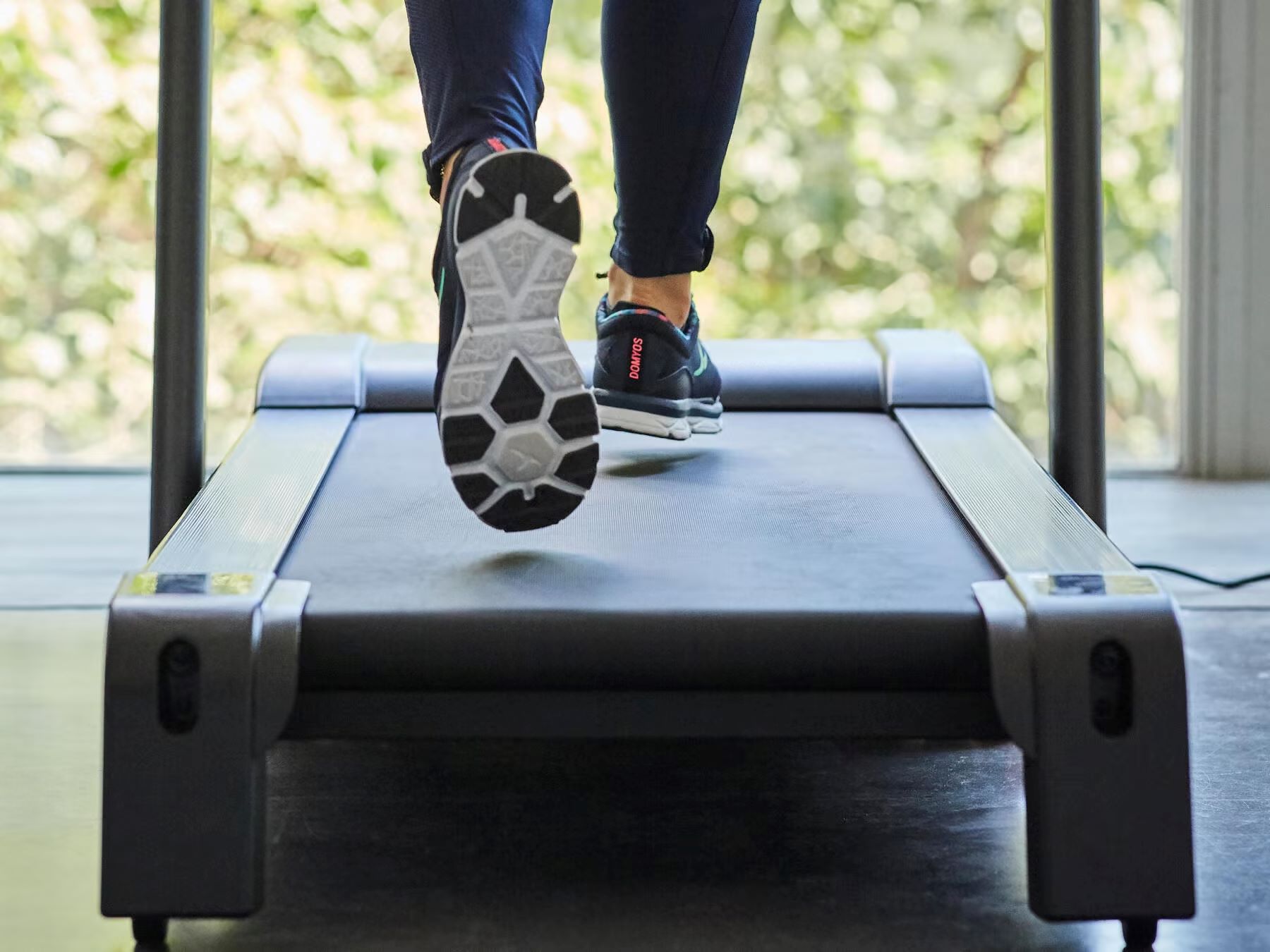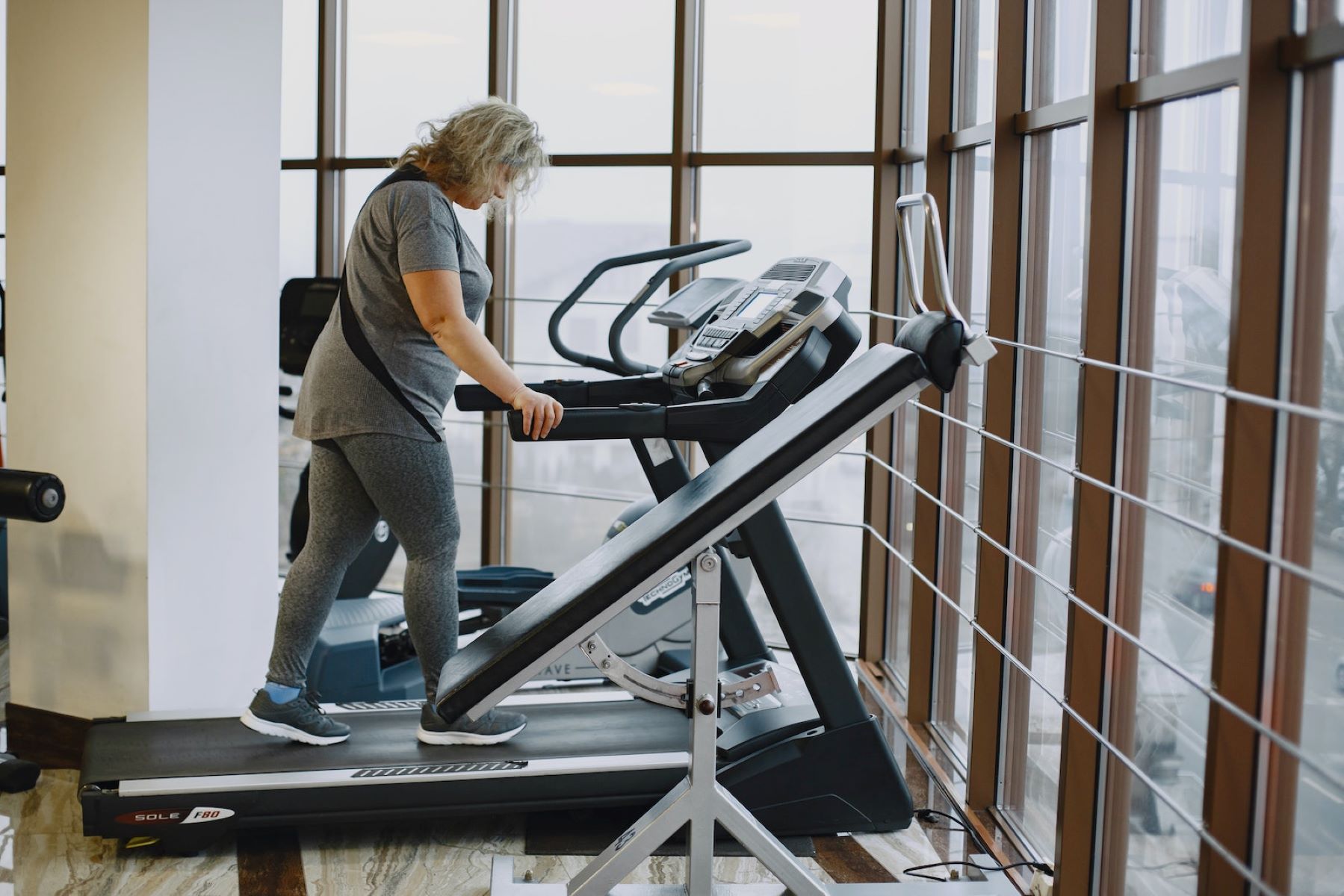Home>Misc>Featured>What Is A Good Warm Up Before Interval Training


Featured
What Is A Good Warm Up Before Interval Training
Modified: March 1, 2024
Discover the importance of a good warm up before interval training and learn valuable tips to maximize your workout performance. Featured article on effective warm up routines.
Introduction
When it comes to interval training, many people focus on the intense workout itself without giving much thought to the importance of a proper warm-up. However, a good warm-up routine is essential to maximize the benefits and reduce the risk of injury during interval training.
Interval training involves alternating periods of high-intensity exercise with short rest or recovery periods. This type of training is known for its effectiveness in improving cardiovascular fitness, burning calories, and boosting metabolism. It’s a great way to push your limits and achieve your fitness goals.
But diving straight into high-intensity intervals without properly preparing your body can be a recipe for disaster. A solid warm-up routine is key to preparing your muscles, joints, and cardiovascular system for the demands of intense intervals and can significantly enhance your performance and overall experience.
In this article, we’ll explore the benefits of a good warm-up before interval training and discuss the essential components that make up an effective warm-up routine. By incorporating these strategies into your pre-workout routine, you’ll be better equipped to handle the intensity of interval training and optimize your fitness results.
Benefits of a Proper Warm Up Before Interval Training
A proper warm-up before interval training offers a multitude of benefits, both for your physical and mental well-being. Let’s explore some of these benefits:
- Increased Muscle Temperature: When you perform a warm-up, your body temperature rises, which increases blood flow to your muscles. This, in turn, enhances muscle flexibility and reduces the risk of muscle strains or tears.
- Improved Range of Motion: Dynamic stretching exercises included in a warm-up routine help improve your range of motion. This increased flexibility allows for better joint mobility, leading to more efficient movements during your intervals.
- Enhanced Performance: A proper warm-up primes your cardiovascular system, preparing it for the demands of intense interval training. It increases your heart rate gradually, ensuring a smooth transition from rest to exercise and optimizing oxygen and nutrient delivery to your muscles.
- Reduced Risk of Injury: Warming up before interval training helps activate the muscles and connective tissues, making them more resistant to injury. It also helps identify any potential muscle imbalances or weaknesses, allowing you to address them before pushing your limits.
- Mental Preparation: A good warm-up also prepares your mind for the upcoming challenges. It helps you focus on the task at hand, boosts your motivation, and mentally prepares you for the intensity of interval training.
- Improved Recovery: A proper warm-up increases blood flow to your muscles, delivering more oxygen and nutrients while flushing out waste products. This aids in faster post-workout recovery, reducing muscle soreness and stiffness.
By incorporating a comprehensive warm-up routine into your interval training sessions, you can experience these benefits and more. It sets the stage for optimal performance, reduces the risk of injury, and enhances your overall training experience.
Components of a Good Warm Up
A good warm-up routine consists of several key components that work together to prepare your body for the intense demands of interval training. Let’s explore these components:
- Dynamic Stretching: Dynamic stretching involves active movements that target major muscle groups. It helps increase muscle elasticity and range of motion. Include exercises like leg swings, arm circles, and walking lunges to loosen up your muscles and joints.
- Mobility Exercises: Mobility exercises focus on improving joint mobility and stability. These exercises target specific areas that are prone to stiffness or tightness, such as the hips, shoulders, and thoracic spine. Examples include hip circles, shoulder rotations, and thoracic extensions.
- Cardiovascular Warm Up: Gradually increasing your heart rate and blood flow is crucial before diving into high-intensity intervals. Perform a low-intensity cardiovascular activity, such as jogging or cycling, for 5-10 minutes to warm up your cardiovascular system.
- Activation Exercises: Activation exercises help activate dormant muscles and improve muscular imbalances. Include exercises that target specific muscles involved in your interval training, such as glute bridges, planks, or band exercises.
These components work together to prepare your body for the demands of interval training. They increase blood flow, enhance muscle flexibility, and activate the necessary muscles for optimal performance. By incorporating these components into your warm-up routine, you can significantly improve your training experience and reduce the risk of injuries.
Dynamic Stretching
Dynamic stretching is a vital component of a good warm-up routine before interval training. Unlike static stretching where you hold a stretch for an extended period, dynamic stretching involves active movements that mimic the motions you’ll perform during your workout. This type of stretching helps to engage your muscles, increase blood flow, and improve your range of motion.
Here are some dynamic stretching exercises you can include in your warm-up:
- Leg Swings: Stand next to a wall or stable object and swing one leg forward and backward in a controlled manner. This exercise helps loosen up your hamstrings, quadriceps, and hip flexors.
- Arm Circles: Extend your arms out to the sides and make small circular movements with your arms. Gradually increase the size of the circles to warm up your shoulder joints and improve shoulder mobility.
- Walking Lunges: Take a step forward with one leg and lower your body into a lunge position. Push off with your back leg and repeat the movement, alternating legs. This exercise targets your hip flexors, glutes, and quadriceps while also improving balance and coordination.
- High Knees: Stand tall and alternate lifting your knees as high as possible while jogging in place. This exercise helps warm up your hip flexors, quadriceps, and core muscles while also increasing your heart rate.
- Butt Kicks: Jog in place while kicking your heels up towards your glutes. This exercise activates your hamstring muscles and improves range of motion in your hip flexors.
Ensure that each movement is controlled and within a comfortable range of motion. Dynamic stretching should not cause pain or discomfort. It’s important to listen to your body and adjust the intensity or range of motion as needed.
Incorporating dynamic stretching into your warm-up routine helps to increase blood flow, improve flexibility, and mentally prepare your body for the upcoming interval training session. By properly preparing your muscles and joints, dynamic stretching reduces the risk of injury and enhances the effectiveness of your workout.
Mobility Exercises
Mobility exercises are an essential component of a comprehensive warm-up routine before interval training. These exercises specifically target improving joint mobility and stability, ensuring that your body can move through a full range of motion with control and stability during your workout.
Here are some effective mobility exercises to include in your warm-up:
- Hip Circles: Stand with your feet hip-width apart and place your hands on your hips. Slowly rotate your hips in clockwise and counterclockwise circles, focusing on smooth and controlled movements. This exercise helps improve hip mobility and flexibility.
- Shoulder Rotations: Stand tall and extend your arms out to the sides. Make small circles with your arms, gradually increasing the size of the circles. This exercise helps to warm up and improve the mobility of your shoulder joints.
- Thoracic Extensions: Sit on a mat with your legs extended in front of you. Place your hands behind your head and gently arch your upper back, focusing on extending your thoracic spine. This exercise improves mobility in your upper back and shoulders, which is important for maintaining proper posture during interval training movements.
- Ankle Circles: Stand tall and lift one foot slightly off the ground. Make small circles with your foot, rotating your ankles clockwise and counterclockwise. This exercise helps to improve ankle mobility and flexibility, which is important for movements like running and jumping during interval training.
- Wrist Circles: Extend your arms straight out in front of you and make circles with your wrists, rotating them clockwise and counterclockwise. This exercise helps improve wrist mobility, which is important for exercises that involve gripping or pushing movements.
When performing mobility exercises, it’s important to focus on controlled movements and avoid any sharp or jerky motions. Take your time and listen to your body, adjusting the range of motion or intensity of the exercises as needed. Remember, the goal is to improve joint mobility and stability, not push yourself to the point of discomfort or pain.
Including mobility exercises in your warm-up routine helps to improve your overall range of motion, enhance joint stability, and prepare your body for the movements required during interval training. By focusing on mobility, you can move more efficiently and effectively through your workout, reducing the risk of injuries and maximizing your performance.
Cardiovascular Warm Up
A proper cardiovascular warm-up is a crucial component of a well-rounded warm-up routine before interval training. This phase of the warm-up gradually increases your heart rate, raises your body temperature, and gets your cardiovascular system ready for the intense demands of your workout.
Here are some effective cardiovascular warm-up exercises to include:
- Jogging: Start with a light jog for 5-10 minutes to increase your heart rate and warm up your muscles. This exercise helps to gradually elevate your heart rate and prepare your body for the upcoming intensity.
- Cycling: If you have access to a stationary bike, hop on and pedal at a moderate pace for 5-10 minutes. This low-impact exercise increases your heart rate, warms up your lower body, and prepares your muscles for the interval training ahead.
- Jumping Jacks: Perform a set of jumping jacks, gradually increasing the speed and intensity. This exercise involves both upper and lower body movements, elevating your heart rate and activating multiple muscle groups.
- Jump Rope: Grab a jump rope and start skipping for a few minutes. This exercise not only raises your heart rate but also improves coordination and warms up your entire body.
- Stair Climbing: If you have access to a set of stairs, go up and down for a few minutes. This exercise engages your lower body, increases your heart rate, and prepares your muscles for the upcoming intervals.
During the cardiovascular warm-up, aim for a moderate intensity level that allows you to comfortably hold a conversation while exercising. It’s important not to push yourself too hard during this phase, as the goal is to gradually elevate your heart rate, not exhaust yourself.
Incorporating a cardiovascular warm-up into your routine helps to increase blood flow, warm up your muscles, and prepare your cardiovascular system for the intensity of interval training. By gradually elevating your heart rate and body temperature, you optimize the efficiency and safety of your workout.
Activation Exercises
Activation exercises play a crucial role in a comprehensive warm-up routine before interval training. These exercises specifically target activating and engaging specific muscle groups to improve muscle activation and prepare them for the demands of your workout.
Here are some effective activation exercises to include in your warm-up:
- Glute Bridges: Lie on your back with your knees bent and feet flat on the ground. Lift your hips off the ground, squeezing your glutes at the top. Lower your hips back down and repeat for several reps. This exercise helps activate your glute muscles, which play a key role in many lower body movements during interval training.
- Planks: Start in a push-up position with your forearms resting on the ground. Engage your core and hold the position for 30 seconds to 1 minute, focusing on maintaining proper form. Planks activate your core muscles and help stabilize your body during interval training exercises.
- Band Exercises: Use resistance bands to perform exercises that target specific muscle groups, such as banded squats, banded rows, or lateral band walks. The resistance from the bands helps activate and strengthen the targeted muscles, further preparing them for the upcoming intervals.
- Scapular Retractions: Stand tall with your arms by your sides and palms facing forward. Squeeze your shoulder blades together, as if you’re trying to hold a pencil between them. Release and repeat for several reps. This exercise helps activate the muscles in your upper back, which are important for maintaining proper posture during interval training movements.
- Muscle-Specific Warm-up Sets: If you are going to perform exercises such as squats, deadlifts, or bench presses during your interval training, including a few light warm-up sets with lower weights can help activate the specific muscle groups involved and to prepare your body for the heavier loads to come.
Focus on performing activation exercises that are specific to the muscle groups you’ll be targeting during your interval training session. By engaging and activating these muscles beforehand, you maximize their recruitment and improve their performance during the workout.
Incorporating activation exercises into your warm-up routine helps to prime the targeted muscles, improving their activation and recruitment during interval training. By preparing these muscles for the upcoming demands, you enhance their performance and reduce the risk of imbalances or compensatory movements.
Timing and Duration of Warm Up
The timing and duration of your warm-up before interval training are crucial factors in optimizing your performance and reducing the risk of injury. A well-timed warm-up allows your body to prepare for the upcoming workout, while the duration ensures that you adequately warm up your muscles and cardiovascular system.
Here are some guidelines to consider for the timing and duration of your warm-up:
- Timing: Ideally, aim to complete your warm-up routine about 10-15 minutes prior to starting your interval training. This allows enough time for your body to adapt and respond to the warm-up exercises, preparing your muscles and cardiovascular system for the upcoming intensity.
- Duration: The duration of your warm-up can vary depending on individual preferences and the intensity of your intervals. A general guideline is to spend 5-10 minutes on cardiovascular warm-up exercises, followed by 10-15 minutes on dynamic stretching, mobility exercises, and activation exercises. Adjust the duration based on your personal needs and the specific requirements of your interval training.
- Progressive Warm-Up: Consider incorporating a progressive warm-up approach, gradually increasing the intensity of your warm-up exercises to mimic the demands of your actual workout. Start with lighter and easier movements and gradually progress to more challenging exercises. This helps prepare your body systems for the increased intensity that comes with interval training.
- Listen to Your Body: Pay attention to how your body feels during the warm-up. If you start feeling loose, energized, and ready to go, it’s a good indication that your warm-up has been effective. However, if you still feel stiff or fatigued, you may need to extend your warm-up duration or incorporate additional exercises to properly prepare your body.
Remember, the timing and duration of your warm-up may vary depending on your fitness level, the intensity of the intervals, and any specific needs or limitations you may have. It’s essential to listen to your body, make adjustments as needed, and find a warm-up routine that works best for you.
By ensuring that your warm-up is well-timed and of sufficient duration, you provide your body with the necessary preparation to handle the stress of interval training. This enables you to perform at your best potential and minimize the risk of injuries.
Conclusion
A proper warm-up routine before interval training is not something to be overlooked. It is a crucial step to optimize your performance, reduce the risk of injury, and enhance your overall training experience. By incorporating the components of a good warm-up, such as dynamic stretching, mobility exercises, cardiovascular warm-up, and activation exercises, you prepare your muscles, joints, and cardiovascular system for the demands of intense intervals.
The benefits of a proper warm-up are numerous. It increases muscle temperature, improves range of motion, enhances performance, reduces the risk of injury, and mentally prepares you for the upcoming challenges. The dynamic stretching exercises increase muscle flexibility, while mobility exercises improve joint mobility and stability. The cardiovascular warm-up gradually raises your heart rate and prepares your cardiovascular system, and activation exercises engage specific muscle groups to improve muscle activation and performance. Timing and duration are important factors to consider, ensuring that you allow enough time for your body to properly warm up and adapt to the upcoming workout.
Remember to listen to your body throughout the warm-up process and adjust the intensity or duration as needed. Everyone’s warm-up routine may vary, so find what works best for you. By investing time and effort in a comprehensive warm-up routine, you set the stage for a successful interval training session, allowing you to push your limits, achieve your fitness goals, and enjoy the benefits of this effective training method.









